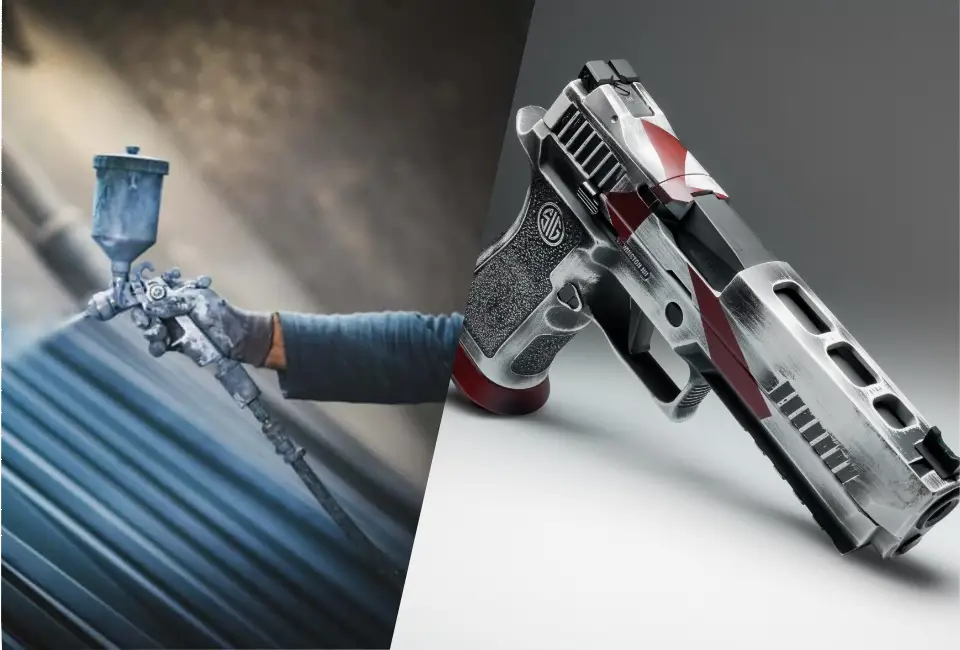We all make small to big decisions almost every day. But to address a decision as ‘right,’ you always need to have the right information.
For example, you have to decide on the coating you will apply to your new furniture or parts. While people typically struggle to choose between ceramic and powder coating, you need to delve into the details before making a sound decision.
It’s a common question – “Should I use Ceramic or powder coating?” Or, “Can I use both interchangeably?”
To be precise, both are tougher coatings that render high resistance to extreme uses. However, some differences set them apart and leave people in confusion when making a choice. People have been using powder coating for decades in various applications.
On the other hand, ceramic coatings such as Cerakote were originally created in the aerospace industry. But it is now applied to other materials too. So what’s the difference between the two? Which one should you go for?
Let’s decipher the details of these two coatings and see which one would work better for your application.
Powder Coating And Cerakote: What Are They?
Powder coating signifies a dry finishing process. They are considered to be usually fast and always more effective than spray-on coatings.
- You can use powder coatings for decorative and protective finishes.
- You can also use it to spray on the gun, then bake on to make a strong coating.
On the contrary, Cerakote refers to a polymer-ceramic composite coating that you can apply on plastics and metal. It has the capacity to boost the hardness and resistance of the material against wear, corrosion, and chemicals.
- People usually use Cerakote on gun barrels, suppressors, and muzzle breaks.
- Moreover, you can use its thinner coating on industrial valves, personal firearms, and knives.
As mentioned before, the ceramic coating was initially formed to meet the aerospace industry’s needs. However, people today widely utilize it in the automobile industry on materials, including headers, intake manifolds, mufflers, and exhaust manifolds.
Moreover, you will even find ceramic coating’s usage with compressed air and a high-volume paint gun. At first, parts are baked as they remove the impurities and clean grease or any old paint.
Also Read:- When and How Did We Humans Start Counting Years?
Ceramic Coating: What are its Advantages?

Applying the ceramic coating offers a durable finish on the material that minimizes heat transfer. In addition, it offers resistance to corrosion, increasing the metals’ longevity.
Materials with ceramic coating also prevent staining and are impervious to fuel and oil.
Furthermore, when you add a ceramic coat to a part, it forms a thermal barrier. It cuts the radiant heat in half and decreases temperatures beneath the hood in some instances.
Benefits of Using Cerakote on Guns

You will need heat to apply both Cerakote and powder coating. However, you will have to apply more heat for powder coating than Cerakote. This is why Cerakote is a preferred choice for historic guns. Moreover, environmental conscious opt for Cerakote due to the manufacturing process.
This ceramic coating is actually thinner. A single thin coat is sufficient to protect the gun. However, professional applies only one to two thick mill coatings. On the contrary, you need to apply a thick powder coating layer to achieve a similar effect as Cerakote.
So if you are looking to put your gun through the paces, Cerakote would be the ideal choice. This will allow you to coat the inner parts that wouldn’t have functioned with powder coating.
- The durability of Cerakote is much longer than the conventional bluing of guns.
- The coating of hard corners is always prone to rub off. Thus, if you want to camouflage the gun, it can be a selling point.
- Interestingly, Cerakote can be applied to a gun-like paint. After baking, it forms a very hard coating.
- Eventually, you can have green or brown camouflage patterns or zebra stripes on a gun when applying Cerakote.
Also Read:- How to Write A Check For 1200 Dollars? (A Step-by-Step Guide)
What’s more?
You will enjoy a lot more consistent color with Cerakote than even anodizing. At the same time, powder coating may not meet your expectation regarding the same effect offered by Cerakote.
So the green ticks are –
Cerakote coating has an appreciating heat tolerance level without getting distorted or discolored.
- It is even UV stable.
- Plus, it offers high resistance to chemicals and corrosion. This is a prime consideration in the automotive industry.
However, note that automotive versions of Cerakote shouldn’t be used on guns. Several Cerakote versions serve as a thermal barrier instead of containing heat. It boosts the proficiency of external turbo housings on cars and combustion chambers.
Disadvantages of Applying Cerakote on Guns
It is known that the most advanced versions of Cerakote coatings are made only for law enforcement and the military. Furthermore, you cannot apply Cerakote on your own at home, as it is difficult to do. However, in theory, powder coating is comparatively easier to coat on a gun.
You cannot coat plastics with Cerakote. Plastics can’t take the temperature needed to coat it.
However, you can apply Cerakote coating on a gun’s metal pieces separately. The hassle here is that you have to purchase special paints to coat the plastic parts, which should match the ceramic coat.
Cerakote can’t also be applied to flexible materials.
Also Read:- How to Disconnect Your iPhone From Your Mac in 9 Easy Ways?
Powder Coating: What are its Advantages?
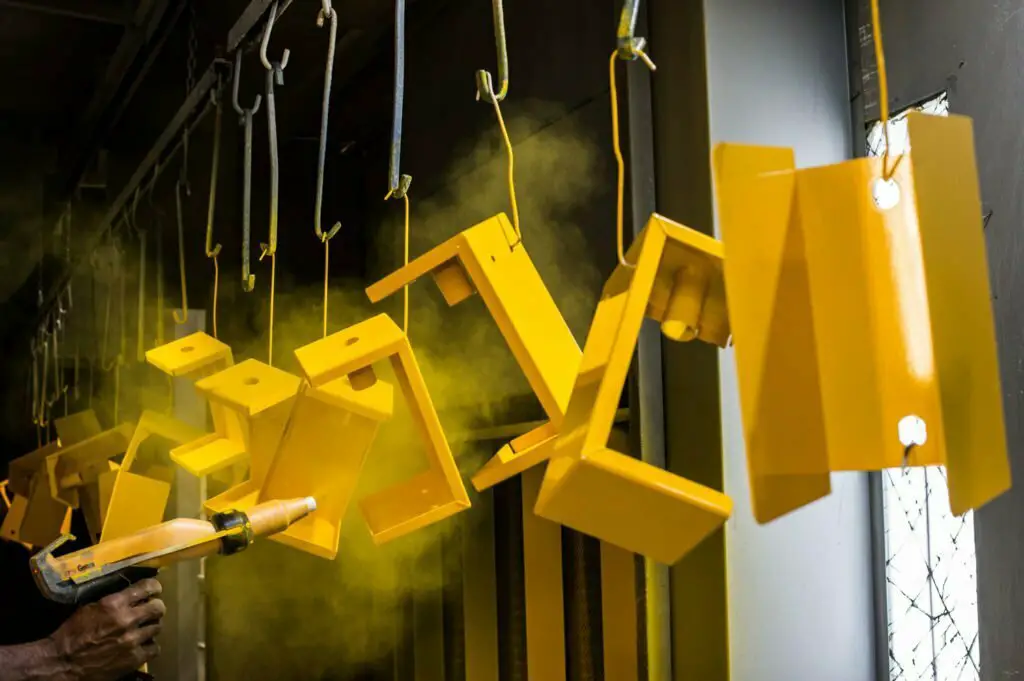
There are various colors out there to choose from, available in different compositions that suit individual needs. You can choose between different colors and finishes that will compliment your project.
- However, you can use powder coating on any conductive metal.
- It can even be applied to antiques, automobile frames, and more.
- Nevertheless, if you apply powder coating over paint, it becomes more durable.
Benefits of Powder Coating on Guns
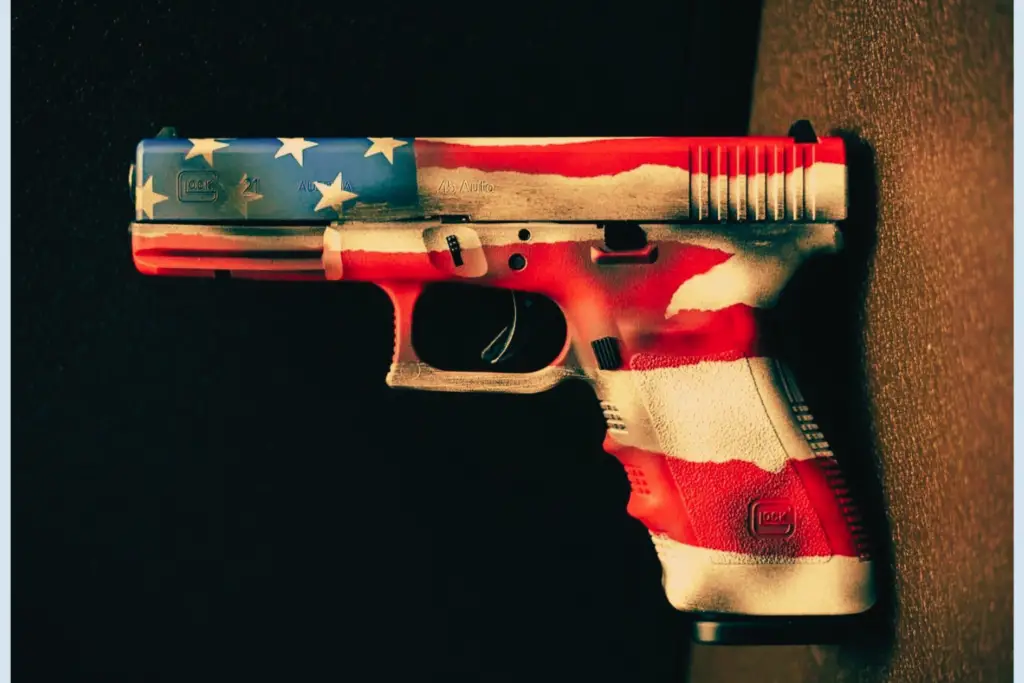
- Powder coating is more easily available than Cerakote. People use powder coating on car bodies and toilet partitions.
- Powder coating works great on continually scratched up or roughed up surfaces thanks to its thickness.
- Thus, you will see powder coating on automotive frames. However, Cerakote, in theory, would be a better choice for it.
- Whether you want a gritty feel or a smooth slick, powder coating offers you more choices regarding finishings.
Disadvantages of Powder Coating on Guns
- Guns are known to have tight tolerances. Thus, if you apply a powder coat, it can be uneven. And this can create issues with the device.
- You can easily apply powder coatings on the external surfaces. But it’s challenging to get into the internal areas such as a gun’s muzzle.
- Moreover, it’s pretty messy to apply this coating.
- It can chip, peel and flake like paint.
Powder coating is just an option to use on guns. It creates thicker coats. Moreover, getting an even coating that won’t influence the tight tolerances of the gun is challenging. You may end up bestowing more efforts and labor because of the added prep work.
If the labor cost is considered, powder coating becomes costlier than Cerakote. Moreover, this coating does not provide good resistance to oil, stains, grease, and other chemicals.
Heat Considerations of Powder Coating
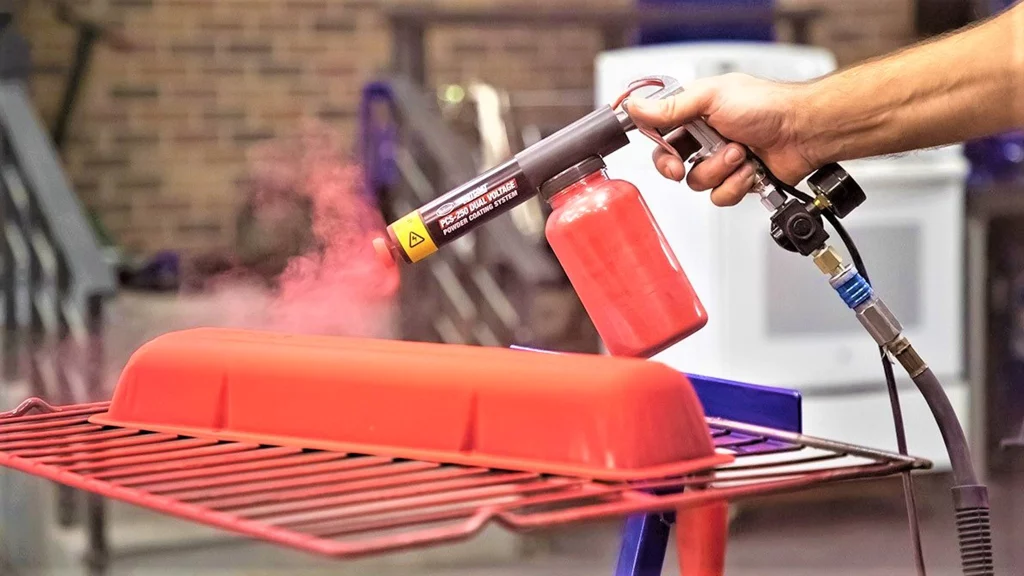
If the materials you are planning to powder coat can resist the high temperature, go for it. But yet, keep in mind that many materials are forbidden to use this coating due to the melting factor.
- Don’t try to apply powder coating to plastics, synthetic plastic polymer, or wood, as they will burn.
- The process of curing includes exposure to over 400 degrees Fahrenheit.
People have been trying some experimental processes today. But admittedly, they are more expensive than other components available like Cerakote.
So it is best to use powder coating on metals. Considering removing any plastic or rubber parts before the application process. Moreover, note that powder coating has a thicker surface. So you can apply it to firearms. But:
While the coating is thick, you will have to make good prep work. Plus, you have to spend additionally on labor costs. Experts recommend avoiding powder coating guns because it requires tight tolerances for the right fit. Plus, it must ensure smooth operation when putting back together.
Also Read:- How to Activate Your Walmart Gift Card?
Powder Coating Vs. Cerakote: FAQs
Here are some facts and queries to further enhance your knowledge of powder coating and cerakote.
Is powder coating stronger than Cerakote?
Cerakote is a ceramic coating that is a lot thinner than powder coating. Moreover, Cerakote offers more resistance to chemicals, corrosion, and more.
Is Cerakote a powder or paint?
Cerakote is a polymer-ceramic composite coating that you can apply to plastics, metals, wood, and polymers. You will need compressed air and a high-volume spray gun to apply this ceramic coating.
Is Cerakote worth the money?
Cerakote is water-proof and can entirely protect a firearm. Moreover, you will find a variety of finishes in the market to suit your individual project’s look. This indeed makes Cerakote a great choice.
Why is powder coating better than paint?
In terms of performance, powder coating is better than wet paint. It is impervious to scratching, chipping, and other wear and tears. However, this is due to the thermal bonding it confronts during curing. And you can apply it in thicker layers.
What is the lasting power of powder coating?
Powder coating usually lasts up to 20 years. But the finishing can break down due to the exposure to the outdoor environment and UV light. However, different versions of powder coating have different lifespans. For example, powder coatings with urethanes and fluoropolymers can last you more.
Why is powder coating costlier?
It is expensive because the process often includes labor and professional tools.
Which things cannot be powder coated?
The list includes plastic, wood, rubber, and any other material that melts at high temperatures.
Is Cerakote good for guns?
This ceramic coating renders a hard finish that resists corrosion, abrasion, and chemicals. It also looks great. The thinness of the Cerakote coating makes it suitable for tight tolerances of guns.
Does Cerakote prevent rust?
Cerakote provides a more efficient barrier against corrosion and oxidation than powder coatings or bluing.
Is powder coating suited for exhaust gases?
The powder coating isn’t compatible with exhaust gases. It will melt as it is cooked at 400 degrees. The exhaust gases have a normal operating temperature of nearly 1200 degrees.
Powder Coat Vs. Cerakote: Which One Should You Select?
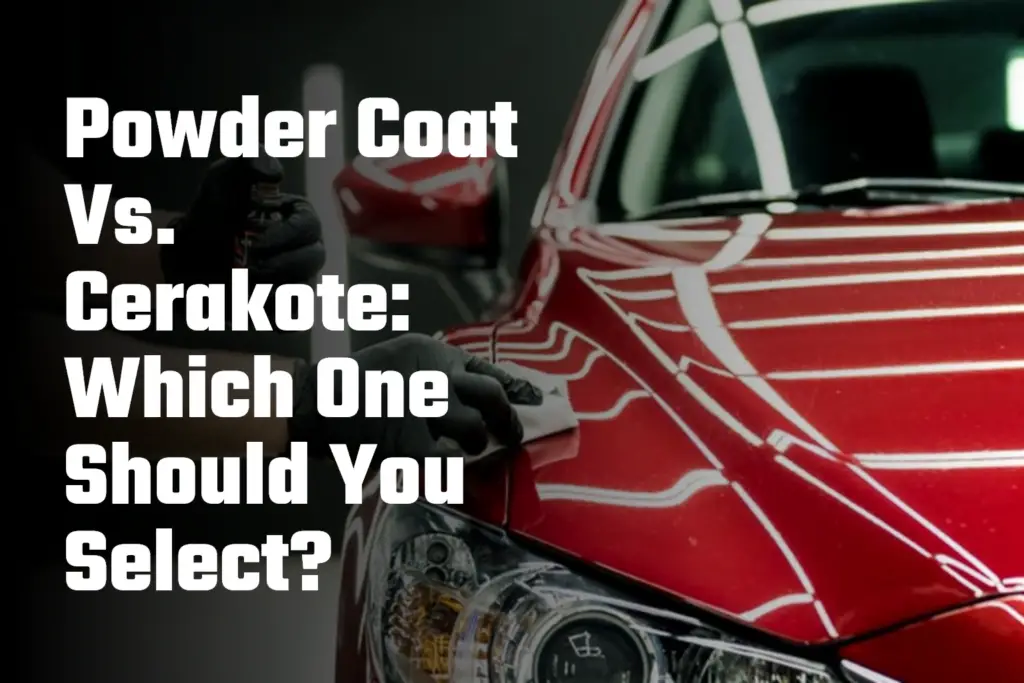
Cerakote will ideally be the best choice if you want unrivaled high-temperature tolerance, corrosion protection, and a variety of finishings or color options. However, the coating you should choose will depend on the material and your purpose. For example –
If you want to apply a single color on your gun, powder coating might be better. But if the gun consists mostly of plastic parts, it would be better to opt for Cerakote.
Powder coating cannot tolerate the heat levels that Cerakote can. Nonetheless, suppose you want to prevent your gun from corrosion. In that case, both the coatings will work, but Cerakote will offer better resistance.
In case the muzzle of your gun becomes too hot, Cerakote coating will be the preferred option. Well, you may still find that many people yet choose the other coating instead of Cerakote. And the reason is usually the cost. But we should not forget that we get what we pay for.
